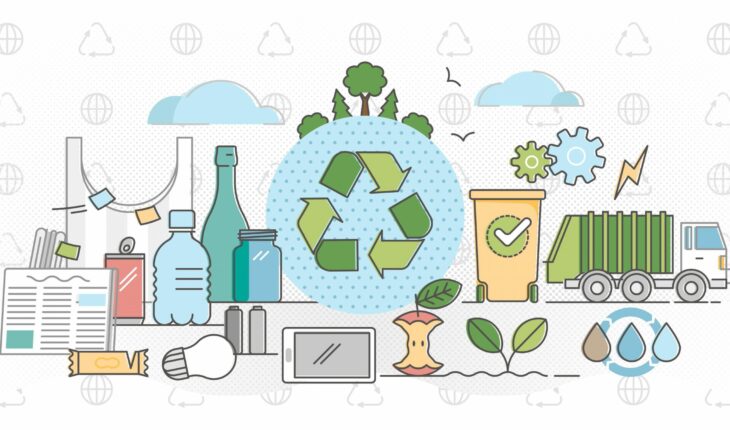Ten years ago, CIBanco modified its corporate purpose and incorporated sustainability into its mission and business plan. In March 2012, it became the first bank in Mexico to sign the Equator Principles, which are financing guidelines that establish responsible environmental and social practices.
Today this seems common, given that environmental, social and governance commitments, known as Environmental, Social and Governance (ESG) Criteria, promoted by the United Nations, have become widespread, but when CIBanco began, it took the lead in this matter among those engaged in financial services.
In the manifesto that synthesized its philosophy, CIBanco established since then as its mission “to be leaders in Mexico in the financial services sector that privileges sustainability as a business axis, for the mutual benefit of companies and people.”
As one of the tasks and commitments to align its purpose with sustainability, a Sustainability Committee has since been created, which reports directly to the president of the Group, Jorge Rangel de Alba. Today experts in environment and sustainability are part of the committee, such as Gustavo Alanis, president of the Mexican Center for Environmental Law; Françoise Lavertu, former CEO of Tesla Mexico and co-founder of South View Studio, and Rodrigo Villar, social entrepreneur and founding partner of New Ventures.
Since 2012, CIBanco publishes its sustainability report in which year after year it reports on the internal measures it has implemented to reduce its carbon footprint, as well as the environmental benefit of products such as CIAuto Verde. One of the measures with the greatest impact is the supply of sustainable electricity, through a power purchase agreement (PPA) and self-supply systems with solar panels.
Read more | The importance of sustainability for the development of industrial parks
Main achievements
For Alanis, one of the main achievements of CIBanco has been to assume the commitment to be a green bank, maintain it over time and lead by example with things as simple as the paperless on customer statements and the installation of solar panels in their facilities and branches.
“I also believe that the bank’s mission, vision and objective contribute to raising awareness among its customers about the need to be more environmentally and socially responsible,” he said.
Lavertu highlights that CIBanco’s commercial strategy is a true differentiator and the pillar of the bank’s sustainability initiative.
“It is the framework on which its financial products are designed and the mold to behave towards its customers and the industry towards a conscious and sustainable consumption, focused on an adequate use of renewable energies,” he said.
In fact, Lavertu recalls that when he was a CIBanco business client, when looking for financial solutions services he had the opportunity to ask many questions to different banks.
“In the end we chose to work with CIBanco because it was the most transparent partner, aligned with a sustainable and coherent strategy with which we identified interests related to our objectives based on leadership associated with sustainability,” he said.
For Rodrigo Villar, CIBanco’s main achievement in terms of sustainability is to have the vision and support of its shareholders to become the first green bank in Mexico.
“This great success is reflected not only in the bank’s products, but also in all internal management and organizational culture,” he said.
An example of this is that its new corporate facilities in Mexico City are located in a LEED certified building.
Opportunities for sustainable finance
For Alanis, one of the greatest opportunities for the financial sector is the commitment to promote a greater sustainable culture.
“One of the greatest opportunities we can find in granting loans to potential customers is to reaffirm as a condition sine qua non that the projects to be financed must comply with certain environmental criteria through which it can be ensured that they are or will be environmentally friendly and that they will not cause damage, affectations or environmental imbalances and that they do not affect the health, life and quality of life of people, “he said.
He also said that preferential rates could be awarded to companies that have an ESG or B-Corps strategy and that annually make their sustainability report public.
According to Lavertu, the greatest opportunities for sustainable finance are in financial well-being.I go through education and fair access to credit.
“In our country there is a huge opportunity to provide valuable information to customers, support families and in particular women to develop financial independence. Many new ones Fintech entered Mexico recently after identifying this need; However, they do not offer complete solutions to consumers. Trust and accountability play a very important role in offering sustainable financial solutions to clients of all sizes,” he said.
Meanwhile, Villar said that the demand for green products is growing every day.
“It is estimated that in the world there are more than 30 trillion dollars of assets under management classified as ESG and in turn more than one trillion classified as impact investing. This demand will continue to grow, and those financial institutions that comply with regulations, transparency and impact measurement will be favored,” he said.
Sectors such as transport, mining, energy, as well as solid and hazardous waste management, are some of those that need greater commitment to green finance.
Sectors requiring green finance
Alanis, Lavertu and Villar agreed on the enormous potential of various sectors of the economy adopting more ambitious and rigorous sustainability practices.
Alanis stressed that sectors such as transport, mining, energy, as well as solid and hazardous waste management, are some of those that need a greater commitment to green finance. In particular, given the global energy crisis and the fact that Mexico has a serious delay in the generation of renewable energies, he considered that innovative public-private investment schemes must be found for clean energy generation projects.
Françoise Lavertu said that the two industries with the highest generation of polluting emissions are transport and real estate, which are responsible, together, for almost 60% of waste harmful to the environment.
“If we could offer attractive green financing to mitigate the upfront costs of modernizing and upgrading current infrastructure, we would increase the adoption of energy solutions with less environmental impact. However, public energy policy has the strongest impact on changing business and consumer behaviour. The financial solutions are here, ready to support these initiatives,” he added.
According to Rodrigo Villar, there is practically a movement towards green finance in all sectors.
“Definitely, the loss of biodiversity and the fight against climate change need a greater commitment due to the deterioration and the great pressure that exists,” he said.
Endorse the commitment
Jorge Rangel de Alba, Chairman of the Board of Directors of CIBanco, stated that the institution assumed a serious commitment, from day one, to promote a green culture both inside and outside the institution.
“We have innovated in sustainable products that reward our customers economically, with lower interest rates, with energy savings in their homes, or reducing their emissions. Maintaining this leadership in Mexico, as the first green bank in our country, requires more and greater innovation from us, and I am sure that we will continue to be pioneers,” he acknowledged.
Rangel de Alba added that sustainability should not be optional, since all companies, small, medium or large, have an ethical and moral obligation to contribute to the conservation and care of the environment.
“The world is transformed and so is our way of relating to it. We must evolve to respond to the expectations that our customers, employees and society have about our performance, and thus face the challenges of being a sustainable bank in the midst of the digital transformation of the sector, the new normality imposed by COVID-19, the economic reactivation of the markets and our commitment to the development of our more than 63 thousand customers, 3,000 employees and 4,000 suppliers,” he concluded.
Opportunities and challenges to be a green bank in the digital age
December 8, 2022 |





